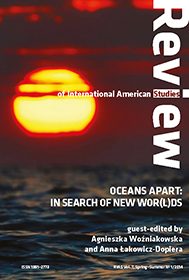Frost, O. W. 1958. Young Hearn. Tokyo: Hokuseido.
Google Scholar
Gould, G. M. 1908. Concerning Lafcadio Hearn: with a Bibliography by Laura Stedman. Philadelphia: George W. Jacobs.
Google Scholar
Gould, G. M. 1922. La cuisine creole: a collection of culinary recipes from leading chefs and noted creole housewives, who have made New Orleans famous for its cuisine. 2d ed. New Orleans: F. F. Hansell. (Original work published 1886).
Google Scholar
Gould, G. M. 1924. An American Miscellany. 2 vols. Ed. Albert Mordell. New York: Dodd Mead.
Google Scholar
Hearn, L. 1925. Occidental Gleanings: Sketches and Essays Now First Collected. A. Mordell (ed). New York: Dodd Mead.
Google Scholar
Hearn, L. 1933. Letters of Pagan. Detroit: Robert Bruna Powers.
Google Scholar
Hearn, L. 1956. Newly Discovered Letters from Lafcadio Hearn to Dr. Rudolph Matas. I. Nishizaki (ed). Tokyo: Hokuseido.
Google Scholar
Hearn, L. 1988. The Writings of Lafcadio Hearn. Large-Paper Edition. In Sixteen Volumes. [Boston and New York: Houghton Mifflin, 1922.] Tokyo: Rinsen.
Google Scholar
Hearn, L. 2001a. Inventing New Orleans: Writings of Lafcadio Hearn. Ed. S. F. Starr. Jackson: University Press of Mississippi.
Google Scholar
Hearn, L. 2001b. Two Years in the French West Indies. [1886] New York: Interlink.
Google Scholar
Hearn, L. 2002. Lafcadio Hearn’s America: Ethnographic Sketches and Editorials. S. J. Bronner (ed). Louisville: University Pres of Kentucky.
Google Scholar
Hearn, L. 2003. Chita: a Memory of Last Island. [1890] D. LaBarre (ed). Jackson: University Press of Mississippi.
Google Scholar
Hearn, L. 2009 Hearn: American Writings. C. Benfey (ed). Library of America. Literary Classics of the United States.
Google Scholar
Hearn, L. 2013. ‘Gombo zhèbes.’: Little dictionary of Creole proverbs, selected from six Creole dialects. [1886] London: Forgotten Books.
Google Scholar
Hardwig, B. 2013. Upon Provincialism: Southern Literature and National Periodical Culture, 1870-1900. Charlottesville: University of Virginia Press.
Google Scholar
Hirakawa, S. (ed) 2000. Koizumi Yakumo Jiten [Reader’s Guide to Lafcadio Hearn]. Tokyo: Kobunsha.
Google Scholar
Imafuku, R. 1994. Kureoru-shugi [The Heterology of Culture; the Creole-ism]. Tokyo: Seidosha.
Google Scholar
Jones, G. 1999. Strange Talk: the Politics of Dialect Literature in Gilded Age America. Berkeley and Los Angeles: University of California Press.
Google Scholar
Long, J. 1999. Literary New Orleans. Athens, Georgia: Hill Street Press.
Google Scholar
Murray, P. 1993. A Fantastic Journey: The Life and Literature of Lafcadio Hearn. Ann Arbor: University of Michigan Press.
Google Scholar
‘New Books’, in The New York Times 1 June 1890 http://query.nytimes.com/mem/archive-free/pdf?res=F00B16F8395F10738DDDA80894DE405B8085F0D3
Google Scholar
Stevenson, E. 1961. Lafcadio Hearn. New York: Macmillan.
Google Scholar
Stevenson, E. 1999. The Grass Lark: A Study of Lafcadio Hearn. New Brunswick and London: Transaction Publishers, Macmillan.
Google Scholar
Turner, A. 1969. ‘Introduction’, Chita: A Memory of Last Island. Chapel Hill: University of North Carolina Press.
Google Scholar



 10.31261/RIAS
10.31261/RIAS